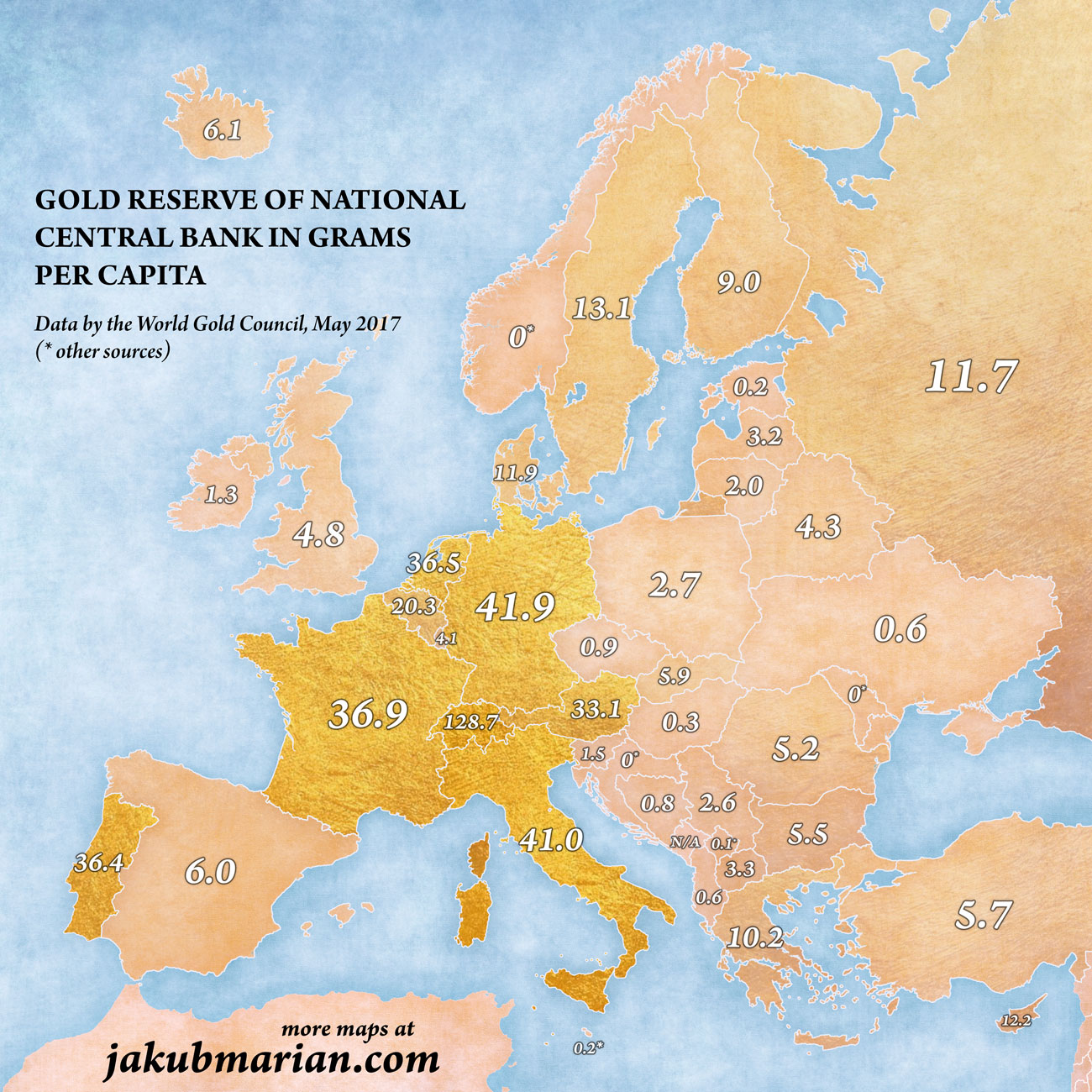Most national central banks in Europe hold a large amount of reserves in the form of foreign banknotes and deposits, treasury bills, gold, and other assets, which are called international reserves (or foreign-exchange reserves in popular usage, which, technically speaking, should only refer to reserves held in a foreign currency).
The main reason for a central bank to hold any kind of reserve is to be able to implement its monetary policy, and gold reserves may expand or shrink as central bankers see fit, so differences in the size of gold reserves (and foreign-exchange reserves in general) do not necessarily indicate differences in the wealth of nations.
The map below shows gold reserves of European national central banks in grams per capita as of May 2017; that is, if a central bank were to distribute the gold it possesses to all inhabitants of the country equally, every inhabitant would receive the amount shown in the map.

For comparison, here are the corresponding figures for several other major nations: United States: 25.5; Japan: 6.0; China: 1.4; India: 0.4; Brazil: 0.3.
 Tip: Are you a non-native English speaker? I have just finished creating a
Tip: Are you a non-native English speaker? I have just finished creating a  Web App
Web App
